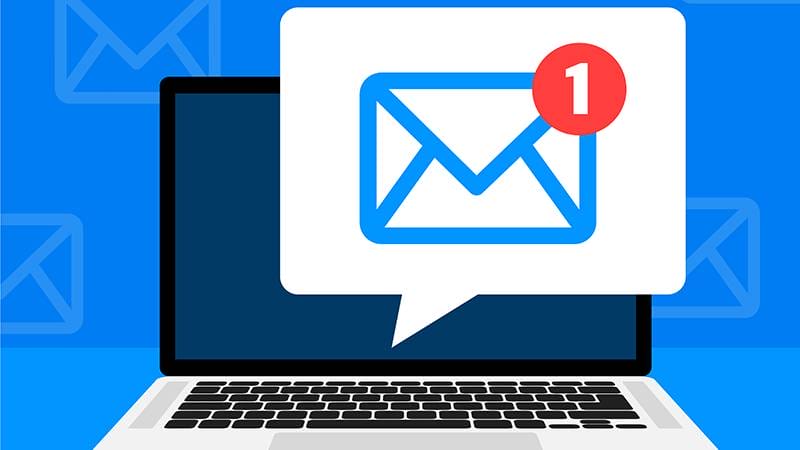In my daily routine, emails are as constant as morning coffee. From quick updates to lengthy attachments, they’re the silent pulse of my professional and personal worlds.
Yet, beneath this digital convenience lies an unseen impact: the carbon footprint of our emails.
Surprisingly, every click, send, and delete contributes to our digital carbon footprint, a concept many of us rarely consider.
This invisible trail of energy consumption, largely driven by our email habits, plays a significant role in environmental change.
It’s time we uncover the hidden cost of our digital activities and understand how even our emails can affect the planet.
How Emails Contribute to Carbon Emissions
The Journey of an Email
The journey of an email from send to receive is more complex than it appears, involving a network of data centers, servers, and devices. When you press ‘send,’ your email embarks on a digital voyage.
First, it’s routed through servers that process and store the message. These servers reside in data centers, vast warehouses filled with rows of energy-consuming machines that work around the clock.
Energy consumption spikes at each of these steps, not just in powering the servers but also in cooling systems to prevent overheating.
The email then travels across the internet, hopping between more servers worldwide, until it reaches its destination.
Finally, when the recipient opens the email, their device also uses energy, completing the cycle of consumption.
This continuous exchange highlights the digital sustainability challenge our emailing habits pose, emphasizing the need for energy-efficient servers and green technology adoption to mitigate the environmental impact.

The Energy Source Matters
Not all energy is created equal, especially when it comes to the power fueling our digital world.
The carbon footprint of an email significantly depends on the energy source powering these data centers and servers.
Renewable energy sources, such as wind, solar, and hydro, have a much lower environmental impact compared to traditional fossil fuels like coal and natural gas.
Many tech companies are now recognizing their role in digital sustainability and are shifting towards renewable energy to power their operations.
This transition is crucial for reducing the carbon emissions associated with digital activities, including emailing.
However, the global mix of energy sources still leans heavily on non-renewable resources, which means that, collectively, our emails contribute to carbon emissions more than we might expect.
Understanding this, it becomes evident that supporting email providers and tech companies that invest in renewable energy and sustainable practices isn’t just beneficial—it’s necessary for a sustainable digital future.
By making informed choices about the services we use, we can help lower the carbon footprint of our digital activities, one email at a time.
The Average Carbon Footprint of an Email
The carbon footprint of an email can vary widely, a fact underscored by research aiming to quantify our digital impact.
A simple text email is estimated to emit about 4 grams of CO2, equivalent to the energy used by a standard light bulb in about 6 minutes.
However, the scenario changes drastically when we attach files to our emails.
An email with a large attachment could have a carbon footprint up to 50 grams of CO2, reflecting the increased energy required to transmit, process, and store the additional data.
These numbers, while seemingly small on an individual level, accumulate to a significant environmental impact considering the billions of emails sent daily worldwide.
Studies, including those conducted by leading environmental research organizations, highlight the importance of digital sustainability.
They point to the urgent need for digital communication impact awareness and the adoption of eco-friendly email practices.
Furthermore, the role of data centers and their energy sources becomes crucial in this context.
Data centers powered by renewable energy can drastically reduce the carbon footprint of each email.
This highlights not just the impact of our individual habits, but also the broader environmental responsibility of tech companies in reducing digital waste and supporting sustainable tech innovation.

10 Strategies to Reduce Your Email's Carbon Footprint
1. Unsubscribe from Unnecessary Newsletters
Regularly clean your inbox by unsubscribing from newsletters and promotional emails you no longer read. This reduces the number of emails sent, processed, and stored.
2. Avoid Unnecessary Email
Think twice before sending an email. If the message can be conveyed through a more efficient means, such as a phone call or a direct message, opt for that instead.
3. Limit Attachments
Attachments increase the size of emails significantly. Use cloud-sharing services for large files instead of attaching them directly to the email, allowing recipients to access the file without increasing email storage.
4. Use Efficient Email Management
Regularly archive or delete old emails to reduce the storage burden on servers. Keeping your inbox clean not only helps you stay organized but also reduces energy consumption.
5. Opt for Text-Only Emails
Whenever possible, send emails without heavy HTML formatting or images. Text-only emails consume less energy during transmission and storage.
6. Support Green Email Providers
Choose email services that are committed to using renewable energy sources for their data centers. This choice directly impacts the carbon footprint of each email you send and receive.
7. Educate Others
Spread awareness about the carbon footprint associated with digital activities, especially emailing, within your network. Encourage adoption of these strategies among peers and in your workplace.
8. Consolidate Messages
Instead of sending multiple emails to the same recipient throughout the day, consolidate your messages into a single email to reduce the number of transmissions.
9. Enable Energy-Saving Settings
Use energy-saving settings on your computer and mobile devices to reduce the power consumption when reading or composing emails.
10. Advocate for Renewable Energy
Encourage your workplace and the tech companies you support to invest in renewable energy sources for their data centers. Your voice as a consumer can influence corporate sustainability practices.

Conclusion
In our journey through the digital landscape, we’ve uncovered the hidden environmental cost of our daily emails. From the energy-intensive journey of each message to the significant difference made by choosing sustainable practices, it’s clear that our digital habits have a tangible impact on the planet.
By adopting strategies to reduce our email’s carbon footprint, we not only minimize our digital environmental impact but also contribute to a larger movement towards sustainability.
Let’s commit to mindful emailing, advocate for green technology, and support renewable energy in the tech industry.
Together, our individual actions can lead to significant environmental benefits. Start today by rethinking your digital habits for a more sustainable tomorrow.

